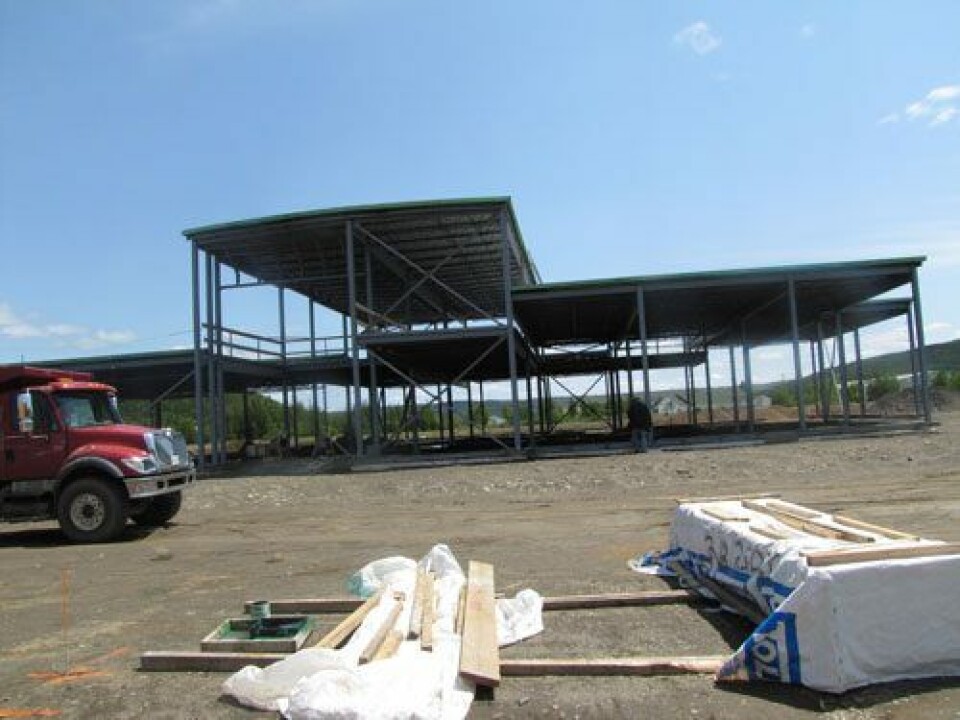
New Fish Health Centre for Newfoundland fish farmers
While salmon farmers in British Columbia are getting no chance to increase production despite a 38% increase in the price of salmon compared to a year ago, governments on the Atlantic coast of Canada are throwing millions of dollars into support for the industry. One of the latest initiatives is the building of a centre for fish health and associated research, as Clayton Hunt of The Coaster reports;
Another major piece of the evolving aquaculture picture in the Coast of Bays is currently under construction in St. Alban's as that community will be home to the Centre for Aquaculture Health and Development (CAHD) which is scheduled to be in operation by April 2011. The centre will be one of the most modern facilities of its kind in the world when completed and is based on models found in Norway, New Brunswick and the United States. The facility will provide at least 10 full-time jobs when in operation - jobs that will include four veterinarians, an animal health technologist, aquaculture technicians, animal health technologists, lab technicians and lab technologists. Dr. Daryl Whelan is the Provincial Aquaculture Veterinarian with the provincial department of Fisheries and Aquaculture (DFA) and is the Director of the Aquatic Animal Health Division with the department. To say that Dr. Whelan is excited about the new CAHD is one of he understatements of the year. Dr. Whelan said that the centre will be very important for the aquaculture industry in the Coast of Bays. He said, "The staff that will work at the CAHD, and the many visiting professionals, will not be interested in abstract research or development. We want to do applied work that benefits the bottom line of producers and that maintains the health of the fish. By having this facility in place we will be able to do that applied work right here in St. Alban's." The Regional Resource Centre in St Alban's already has a lab that is used by DFA. However, a lot of fish samples taken from grow-out sites currently have to be sent to Norway, Scotland or Maine for analysis. Dr. Whelan said that 95 per cent of the health related work will be able to be completed in St. Alban's starting next April. "Our turn-around times will be much faster, and we will gain a greater efficiency and professionalism by doing nearly all the required work in this area," Dr. Whelan said. With regards to applied science, Dr. Whelan said that the CAHD will contain tanks to enable the staff to reproduce environmental conditions on site. He said, "From this reproduction we should be able to get answers to concerns and bring them back to the producers. If it's a problem with disease or a parasite, we can bring the fish here, do the various work samples needed and see if the answer is treatment or a new management strategy." Dr. Whelan said that another great benefit of the CAHD is that it will bring stability and sustainability to the aquaculture industry in the COB. "Stability means that we will be able to do a lot of interactive work with site employees and find solutions to potential problems such as controlling aquatic viruses. In terms of sustainability we need this facility with the continuing growth of our aquaculture industry. This facility, again, will lead to a more stable industry which will help create a steady growth industry that will be sustainable all the way through."






















































